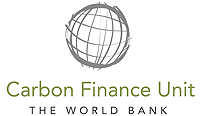Overview
The COMACO Landscape Management Project (CLMP) has promoted sustainable agriculture and forest conservation. The main objectives of the project have been twofold: to sustainably increase smallholder farmer crop yields, income and welfare; and to reduce uncontrolled forest loss and degradation, and increase net forest cover. Hence, the project comprises two components:
- Sustainable Agricultural Land Management (SALM) component – which aims to promote widespread adoption of agricultural practices that increase food production per unit area and farmers’ income. The project promotes the adoption by farmers of legume-based alley cropping, residues management (e.g. mulching; cessation of residue burning), and reduced tillage among other SALM practices.
- REDD+ (Avoided Unplanned Deforestation) component – which aims to reduce forest loss, and protect and expand areas under natural forest, and conserve biodiversity. This is achieved primarily through land use planning and creation of Community Conservation Areas (CCA), coupled with sustainable non-extractive forest use, e.g. honey and mushrooms.
The project stretched across nine chiefdoms in five districts in the Eastern Province of Zambia, namely: Chikomeni (Lundazi district); Chikuwe (Mambwe and Chipata districts); Jumbe (Mambwe, Chipata and Lundazi districts); Luembe (Petauke district); Magodi (Chama and Lundazi districts); Mwasemphangwe (Lundazi district); Mwape (Petauke and Nyimba districts); Nyamphande (Nyimba and Petauke districts); and Zumwanda (Lundazi district). It is a grouped project as defined in the VCS Standard (version 3.4); the first project activity instance comprises 6,793 ha of agricultural land for the SALM component, and 210,305 ha for the REDD+ component.
Prior to the project, poor farming practices such as residue burning led to rapid soil nutrient depletion. There was also a general lack of land use planning and forest management, undertaken in a participatory and coordinated manner – which led to destruction and fragmentation of the forests. The COMACO Landscape Management Project used market incentives – where farmers in those communities that implement sustainable agriculture and adopt land use practices that promote forest and wildlife conservation receive premium prices. It also uses land use planning with traditional leaders and communities to identify and zone areas for conservation and forest management known as Community Conservation Areas (CCA). A Community Conservation Plan (CCP) is developed and implemented for each CCA – including activities for sustainable forest management, and rules regarding forest management.
Benefits
The project activities have resulted in increased and sustainable agricultural production, and forest conservation. GHG emission reductions have been generated through improved carbon storage on farms, and avoidance of mosaic deforestation mainly from unplanned agricultural land conversion. Two VCS-approved carbon methodologies have been used to account for the project’s emissions reductions.
